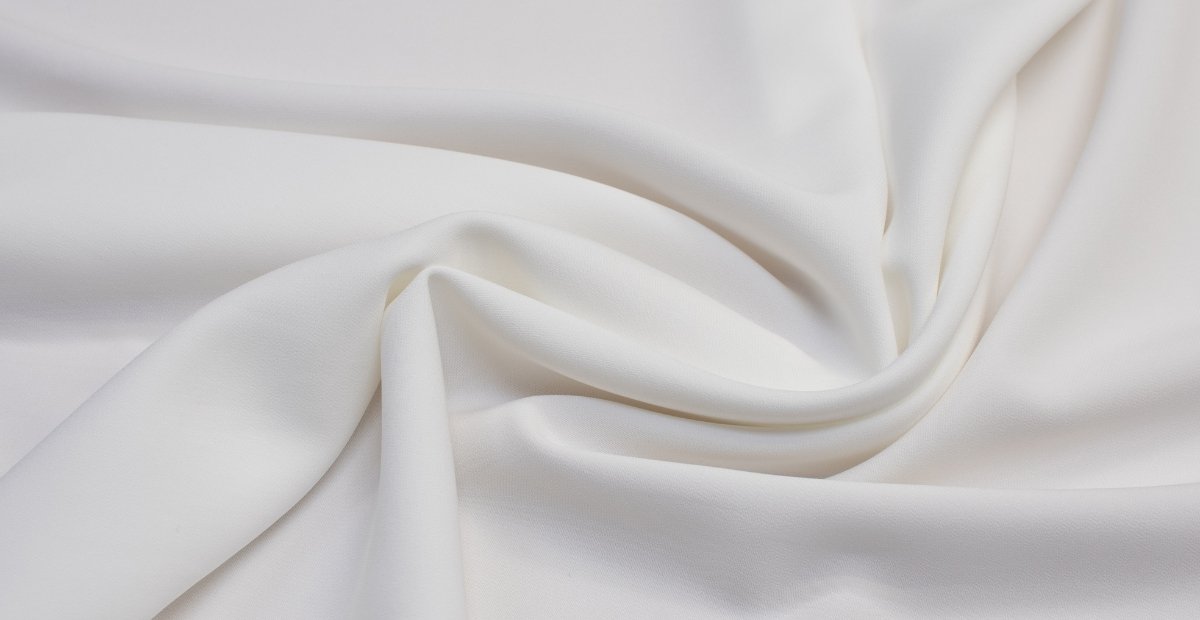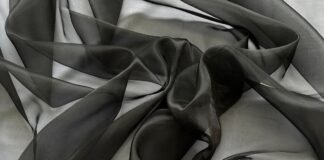Introduction to Viscose Rayon
Viscose rayon is a semi-synthetic fabric made from cellulose, typically sourced from wood pulp. Unlike other fabrics, viscose rayon is comfortable, soft, smooth, and breathable. Viscose is comparable to natural silk and is less expensive. Comfortable and easily affordable, viscose rayon is among the most popular fabric choices in the fashion industry.
History of Viscose Rayon
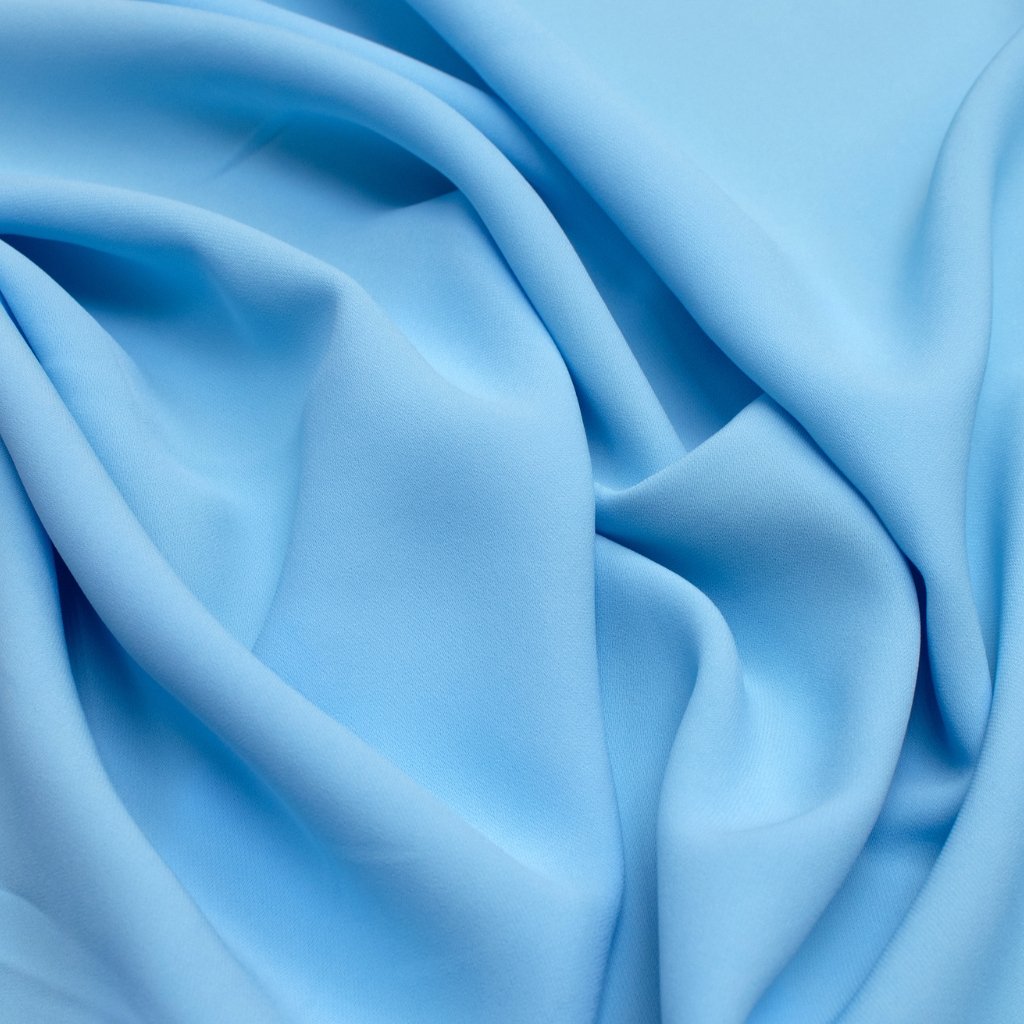
The Beginning of a Silk Substitute
Developed in the late 19th century, viscose rayon fabric was a silk substitute and a lot less expensive than silk. At that time, silk was a luxury fabric. Scientists began transforming cost-effective cellulose in hopes of producing a fiber as luxurious as silk.
Growth in the 20th Century
By the early 1900s, viscose rayon production spread across Europe and America. It was made into dresses, upholstery and even tire cords. The fabric became highly affordable and versatile which made it a fabric of the future.
Modern Adaptation
Viscose rayon has, and is still evolving. The innovations of modal and lyocell have made it more adapted to modern fashion and the growing need for environmental sustainability.
How Viscose Rayon Is Made
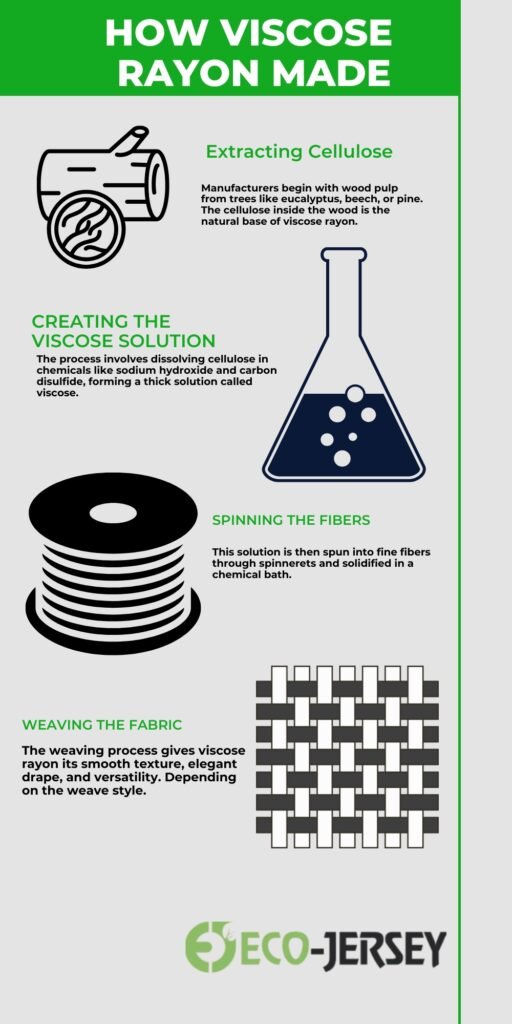
Extracting Cellulose
The first step in making viscose rayon is extracting cellulose, the plant cell wall constituent. Most of the time, beech, pine, and eucalyptus trees provide the wood pulp. The wood is chipped and cleaned before going through the process of lignin removal and other modifications to acquire cellulose. The lignin removal and other modifications to acquire cellulose. The lignin removal and other modifications to acquire cellulose. The lignin removal and other modifications to acquire cellulose. The lignin removal and other modifications to acquire cellulose. The lignin removal and other modifications to acquire cellulose. The lignin removal and other modifications to acquire cellulose.
Creating the Viscose Solution
The next process after the extraction of cellulose is converting articulated cellulose in the form of viscose solution. The treated cellulose is combined with sodium hydroxide and is linked to alkali cellulose. Best quality cellulose goes through the process of time aging. By the time the cellulose is aged, it is made to react with a compound containing disulfide which leads to the formation of cellulose xanthate. The final step dissolves the compound in a sodium hyroxide solution which in viscose solution which is the final step and in a thick honey like solution.
Spinning the Fibers
The viscose solution has to be forced through tiny openings which are labeled holes in spinning called spinning jets. After the solution passes through the jets, it goes through a chemical solution which is a contrived to harden the solution to a filament. The filament which has been produced and hardened is expanded to enhance strength and elasticity. The spinning step is important since it determines whether the viscose rayon produced will be used for thread production.
Weaving the Fabric
Once the viscose rayon fibers have been spun, washed, dried, and twisted, they are converted into yarn and subsequently woven or knitted utilizing standard textile techniques. The techniques used in weaving most fundamentally determines the end appearance and tactile qualities of the resulting fabric. Loose weaves result in soft, fluid materials suitable for garments like dresses and blouses, while more closely woven fabrics offer the strength and durability required for upholstery and home furnishings. At this point, viscose rayon fibers are finally transformed into versatile fabrics which are ready for use.
Properties of Viscose Rayon
Soft and Comfortable: Viscose rayon feels smooth and soft on the skin. This characteristic enables it to be soft for blouses, dresses, and summer wear.
Breathable and Lightweight: The viscose rayon is light and promotes circulation of air thus it is preferable in hot and humid conditions.
Drapes Beautifully: Viscose rayon is used in evening wear and dresses as it provides a nice flow and drape to a garment.
Absorbent Nature
It’s wonderful that viscose rayon absorbs moisture during humid temperatures, but it also means that it wrinkles if not careful. Read more what is rayon fabric
Types of Viscose Rayon
Viscose rayon isn’t a one-size-fits-all. Different types have been created over time to solve particular fashion and industrial problems. Some of these problems revolve around softness, strength, sustainability and eco-friendliness. The variations include regular viscose rayon, high-wet-modulus rayon (HWM), modal and lyocell. Varied purposes and problems need to be solved, and understanding these types enables designers, brands and consumers to solve their particular fabric problem for clothing and home textiles.
Regular Viscose Rayon
Regular viscose rayon is the classic form of this fabric. It is widely used in dresses, blouses, upholstery, and curtains. Known for its silk-like drape and smooth texture, it adds elegance to both clothing and interiors. However, regular viscose rayon loses strength when wet, making it less durable than other variations. Despite this limitation, it remains popular because of its affordability and ability to mimic silk.
High-Wet-Modulus Rayon (HWM)
High-wet-modulus rayon is a stronger variety of viscose rayon, a stronger viscose rayon, and retains most of its strength when wet. This makes HWM rayon practical for clothings that need routine washing, such as shirts, dresses, and uniforms. HWM rayon is also more durable than viscose rayon, making it better for everyday use. It also better resists shrinkage, helping garments hold their shape and quality after laundering.
Modal
Modal is a more premium version of viscose rayon. It is known for its silky softness, luxurious feel, high abrasion resistance, and ability to hold color. Modal is often used in underwear, sportswear, and high-end casual fashion because of its comfort and durability. Its breatheability and smoothness make it a top choice for those who want performance and style.
Lyocell
Lyocell is the eco-friendly progression of viscose rayon. It is produced in a closed-loop manner, which is more sustainable than traditional viscose rayon. It is strong, breathable, and smooth. It is made into dresses, shirts, activewear, denim, and bed linens. Many eco-conscious fashion brands use lyocell, promoting it as comfort, denim, and bed linens.
Uses of Viscose Rayon
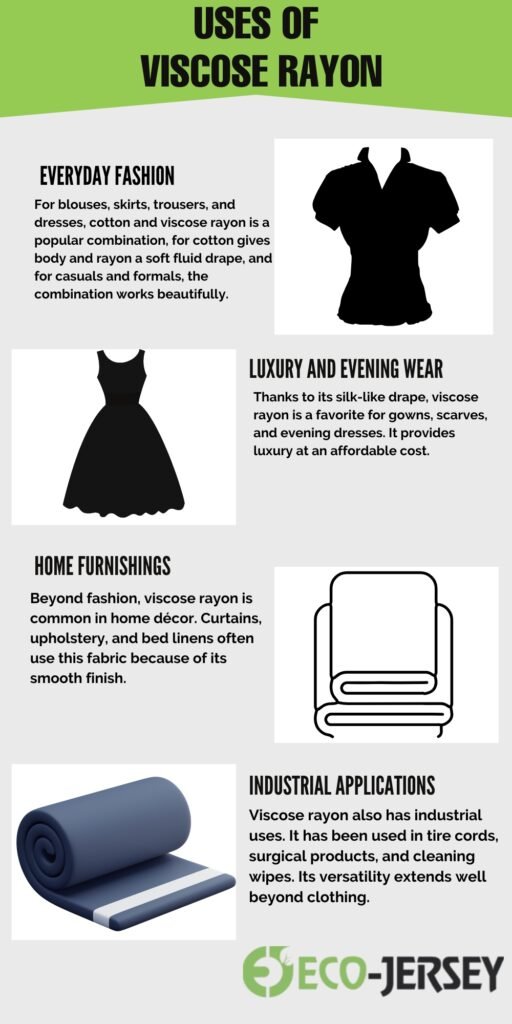
Your Everyday Wardrobe Bestie 👕👗
Viscose rayon is the hero of your closet! It’s the fabric that is so comfortable and looks put together as well.
- Why you love it: It’s breathable, soft on your skin and doesn’t stick to you.
- Where you’ll see it: In your favorite flowy blouses, comfortable summer dresses, elegant skirts, and lightweight trousers. It’s perfect for casual days or lunch outings.
Affordable Luxury & Glamorous Evenings ✨
Want to feel like a million bucks without spending it? Viscose rayon is the answer! It has the beautiful, silky drape of luxury fabrics but for a much lower cost.
Why you love it: It flows and moves with you and gives the ultimate elegant look.
Where you’ll see it: In gorgeous evening gowns, chic wrap dresses, and light scarves that add a splash of color and sophistication.
Comfy & Chic Home Sweet Home 🏡
The same qualities that make viscose rayon great for clothes also make it great for your home. It adds a touch of softness and elegance to your living space.
Why you love it: It has a smooth, luxurious feel that makes your home cozy.
Where you see it: In the lovely draperies and upholstery as well as the fabulous linens on your beds that you enjoy.
The Odd Hero (Industrial Uses) 🦸♂️
This is the fun part! You would have never guessed the ways in which the strength and absorbency of viscose rayon can be used. You can have great strength and great absorbance.
Where you see it: In the absorbent and cleaning wipes; in some medical supplies due to purity; and as a strengthening composite in other products.
In short: Viscose rayon is a fab all-rounder. The everyday products that work splendidly and your lovely dress are because of it. That’s why your drapes are beautifully flowing.
Comparing Viscose Rayon with Other Fabrics
Viscose Rayon vs. Cotton
Viscose rayon is chosen for style and elegance, but for rough use where durability is needed, cotton is used, even when wet.
Viscose Rayon vs. Silk
Silk is luxurious but expensive. Viscose rayon offers a nearly identical texture and sheen at a fraction of the price. This makes it a smart alternative for affordable luxury.
Rayon vs Polyester
While polyester is more durable and resistant to wrinkling, viscose rayon offers better breathability and is more comfortable during hot weather. Unlike polyester, which can feel sticky when the humidity is high, viscose rayon is more comfortable.
Care Tips for Viscose Rayon
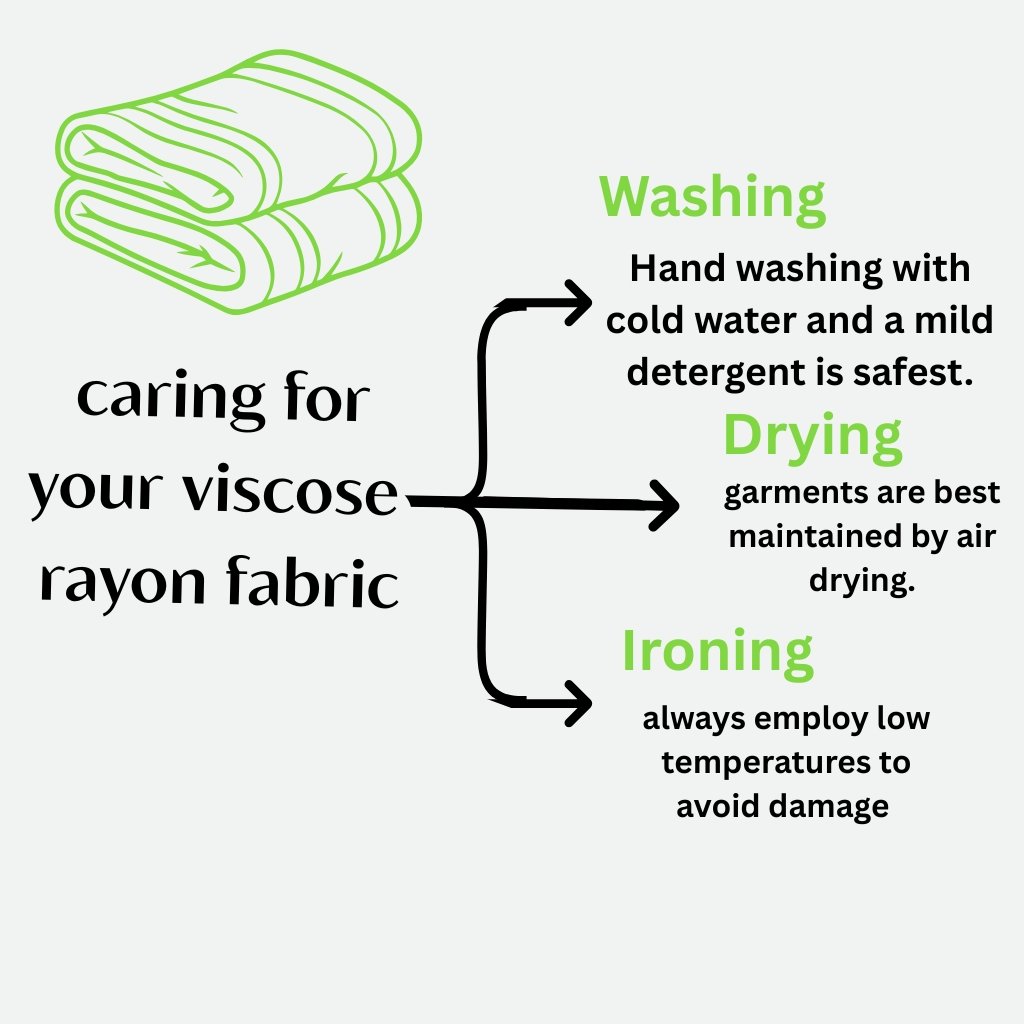
Washing Tips
Viscose rayon must be washed gently to keep it soft and to maintain its structure. Hand washing with cold water and a mild detergent is safest. If you must machine wash, use a delicate cycle and a mesh laundry bag for protection. Avoid bleach and strong chemicals as they weaken the fabric and fade the colors. You will get longer-lasting garments from viscose rayon if you treat it gently.
Drying Guidelines
Viscose rayon garments are best maintained by air drying. After washing, gently press out excess water without wringing, which can stretch and damage the fabric. Lay the item flat on a clean towel, or hang it on a padded hanger to dry. Avoid direct sunlight, as it may cause the fabric to fade. Tumble drying is not an option, as the heat will cause viscose rayon to shrink, and shorten its lifespan.
Ironing Viscose Rayon
When working with viscose rayon, always employ low temperatures to avoid damage. To prevent direct heat contact, which can leave shiny marks, place cotton or thin pressing cloth over the garment. Ironing the fabric while slightly damp helps achieve smooth results. Gentle and slow steam ironing is also effective. To maintain viscose rayon pieces in leurs pristine condition and elegant appearance, handle with care and patience while ironing.
Environmental Impact of Viscose Rayon
The production method determines the environmental impact of viscose rayon. Traditional production methods use harsh chemicals that pollute water, endangering the health of workers. The nviromentally friendly closed-loop processing used for lyocell, advanced viscose rayon production methods. In order to meet consumer demand, many brands are adopting eco-friendly production methods. Bearing the many benefits of this versatile fabric visocose rayon, the purchase can mitigated environmental impact.
Conclusion
Viscose rayon combines comfort, versatility, and style in one fabric. There are multiple options, including regular viscose rayon and eco-friendly lyocell, to cater to different needs. Its popularity in fashion and home décor is due to its affordable luxurious feel. With proper care and conscious choices, viscose rayon remains an excellent fabric that balances style, comfort, and sustainability.
FAQs
What is viscose rayon?
Viscose rayon is a semi-synthetic fabric made from cellulose, known for its softness, breathability, and silk-like drape.
Is viscose rayon eco-friendly?
Traditional viscose rayon is not very eco-friendly, but lyocell, a type of viscose rayon, uses eco-conscious methods.
Does viscose rayon shrink?
Yes, viscose rayon can shrink if exposed to heat or rough washing. Always wash in cold water.
Is viscose rayon good for summer?
Yes, viscose rayon is lightweight, breathable, and cool, making it an excellent choice for summer wear.
How is viscose rayon different from cotton?
Cotton is more durable, while viscose rayon is softer with a silk-like finish and better drape.

